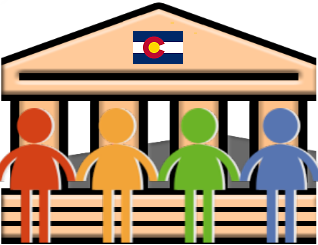From WSJ.com:
Shale Boom Helps North Dakota Bank Earn Returns Goldman Would Envy
U.S.’s Lone State-Owned Bank Is Beneficiary of Fracking
By CHESTER DAWSON
Updated Nov. 16, 2014 6:48 p.m. ET
BISMARCK, N.D.—It is more profitable than Goldman Sachs Group Inc., has a better credit rating than J.P. Morgan Chase & Co. and hasn’t seen profit growth drop since 2003.
Meet Bank of North Dakota, the U.S.’s lone state-owned bank, which has one branch, no automated teller machines and not a single investment banker.
The reason for its success? As the sole repository of the state of North Dakota’s revenue, the bank has been one of the biggest beneficiaries of the boom in Bakken shale-oil production from hydraulic fracturing, or fracking. In fact, the bank played a crucial part in kick-starting the oil frenzy in the state in 2008 amid the financial crisis.
When other banks around the U.S. were curtailing lending and increasing reserves, Bank of North Dakota helped smaller banks in the state ride out the crisis by providing them with letters of credit, loan sales and bank stock. Since then, its total assets have more than doubled, to $6.9 billion last year from $2.8 billion in 2007. By contrast, assets of the much bigger Bank of America Corp. have grown much more slowly, to $2.1 trillion from $1.7 trillion in that period.
Much of that growth has been fueled by surging deposits of mineral-rights royalty payments and taxes stemming from North Dakota’s leap from the country’s sixth-largest oil producer to its second largest over the past five years. The bank taps those coffers to extend loans for new businesses, infrastructure such as hospitals and purchases of new homes, all of which have seen increased demand as oil workers flock to the state.
Set up in 1919 under a socialist-oriented government that represented farmers frustrated with out-of-state commodity and railroad owners, the bank treads a fine line between the private and public sectors in what today is a solidly Republican state. It traditionally extends credit, or invests directly, in areas other lenders shun, such as rural housing loans.
The bank’s mission is promoting economic development, not competing with private banks. “We’re a state agency and profit maximization isn’t what drives us,” President Eric Hardmeyer said. At the same time, he said “it’s important to me that we show a respectable bottom line” to taxpayers, noting that the bank historically has returned profits to the state’s coffers.
Its profit, which hit $94 million last year, has grown by double-digit percentages annually since 2010. Return on equity, a measure of profitability, is 18.56%, about 70% higher than those at Goldman Sachs and J.P. Morgan. To be sure, Goldman Sachs and J.P. Morgan are much larger institutions with more complex balance sheets.
North Dakotans can open a personal account at the bank’s only branch in downtown Bismarck, the state capital. But the bank offers few of the perks offered by traditional lenders and says retail banking accounts for just 2%-3% of its business. The bank’s focus is providing loans to students and extending credit to companies in North Dakota, often in partnership with smaller community banks.
Bank of North Dakota also acts as a clearinghouse for interbank transactions in the state by settling checks and distributing coins and currency. “We get compared to a little, mini Federal Reserve” on the prairie, said Mr. Hardmeyer, who has led the bank for nearly 14 years.
For years, Bank of North Dakota paid exactly $30 million annually back into the state’s general budgetary fund. But with North Dakota’s coffers flush with oil revenue, the legislature hasn’t requested the payments from the bank since 2010. Its loan book has expanded, but not fast enough to keep up with deposits and retained earnings.
It recently started offering mortgages to individuals in the most underserved corners of the state. But Mr. Hardmeyer dismisses any notion the bank could run into trouble with deadbeat borrowers. “We know our customers,” he said. “You’ve got to understand the conservative nature of this state. Nobody here is really interested in making subprime loans.”
Five years ago, Bank of North Dakota lent about 90% of its deposits, but that ratio shrank to around 60% in 2013.
Standard & Poor’s Ratings Services last month reaffirmed its double-A-minus rating of the bank, whose deposits are guaranteed by the state of North Dakota. That is above the rating for both Goldman Sachs and J.P. Morgan and among U.S. financial institutions, second only to the Federal Home Loan Banks, rated double-A-plus.
Lawmakers in a few other states such as Colorado and Maryland have advanced proposals to emulate Bank of North Dakota and set up state-owned lenders in recent years, so far without success. “Last year was a peak in terms of introducing these bills,” said Mathew Street, deputy general counsel at the American Bankers Association. “However many bills have been introduced, none have passed since 1919,” he said.
North Dakota officials hesitate to tout the bank as a model. “We think it’s worked well for us, but only because we’re very careful about how we use it,” said North Dakota Gov. Jack Dalrymple.
Not all of Bank of North Dakota’s initiatives have succeeded. One misfire in the early 2000s involved financing “Wooly Boys,” a film starring Peter Fonda and Kris Kristofferson. The movie, about a sheep rancher’s family, was a box-office flop. The bank, which had hoped to spark a tourism boom similar to that in South Dakota after the release of the Kevin Costner hit “Dances with Wolves,” wrote off the loss.
